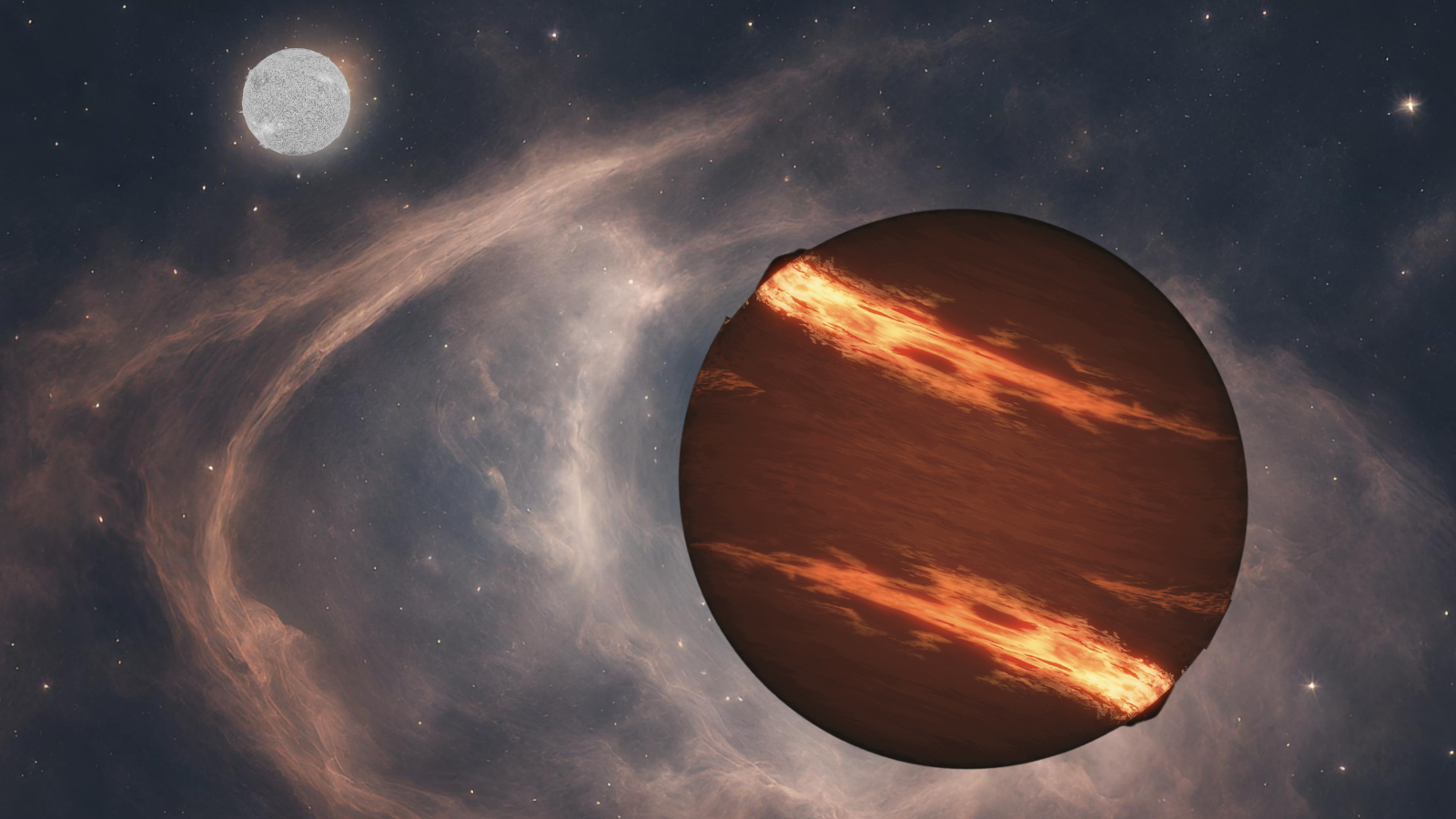James Webb Space Telescope makes rare detection of 2 exoplanets orbiting dead stars
"This offers our first chance to see what a planetary system looks like after its star dies."

The James Webb Space Telescope (JWST) has already proven itself adept at peering into the past by imaging objects at tremendous distances, but a new breakthrough may have seen the powerful instrument act almost like a scientific crystal ball, staring into the far future of the solar system.
The JWST performed its prognostication when it made a possible rare direct direction of two extrasolar planets, or "exoplanets," orbiting two different dead stars, or "white dwarfs."
Not only do the planets strongly resemble solar system gas giants Jupiter and Saturn, but the white dwarfs also serve as analogs to the sun's destiny. When the sun transforms into a white dwarf itself, the change will likely destroy the inner solar system planets — all the way out to Jupiter.
"Very few planets have been discovered around white dwarf stars. What is extraordinary about these two candidate planets is that they are more similar to planets in our outer solar system in temperature, age, mass and orbital separation than any planets previously found," Susan Mullally, lead author of the research, which is yet to be peer-reviewed, and an astronomer at the Space Telescope Science Institute, told Space.com. "This offers our first chance to see what a planetary system looks like after its star dies."
Related: This 'forbidden' exoplanet is way too massive for its star
A snapshot of our future
The planet candidates were directly observed by the JWST's Mid-Infrared Instrument (MIRI) as they orbit the white dwarfs WD 1202-232 and WD 2105-82. One exoplanet candidate is located at a distance from its white dwarf host that's equal to about 11.5 times the distance between the Earth and the sun. The other candidate sits further from its dead stellar parent, at a distance of about 34.5 times the separation between our planet and star.
The masses of the planets are currently uncertain, with Mullally and colleagues estimating them to be between 1 and 7 times that of Jupiter, the most massive planet in the solar system.
Breaking space news, the latest updates on rocket launches, skywatching events and more!
When the sun exhausts its fuel supply for the nuclear fusion processes occuring at its core in around 5 billion years, it will swell up as a red giant. Nuclear fusion, however, will continue in its outer layers. This will see those outer layers of our star reach out as far as Mars, swallowing Mercury, Venus, Earth, and possibly, the Red Planet itself. Eventually, these outer layers will cool, leaving a smoldering stellar core, now a white dwarf, surrounded by a planetary nebula of exhausted stellar matter.
These exoplanet detections, however, hint at what could happen to the planets beyond Mars, the gas giants Jupiter and Saturn, when the sun dies.
"Our sun is expected to turn into a white dwarf star in 5 billion years," Mullally said. "We expect planets to drift outward, into wider orbits, after a star dies. So, if you wind back the clock on these candidate planets, you would expect these to have had orbital separations similar to Jupiter and Saturn.
"If we are able to confirm these planets, they will provide direct evidence that planets like Jupiter and Saturn can survive the death of their host star."
Further, the white dwarfs at the heart of this discovery are polluted with elements heavier than hydrogen and helium, which astronomers call "metals." This could hint at what will happen to the bodies in the asteroid belt between Mars and Jupiter after the sun dies.
"We suspect that the giant planets cause the metal pollution by driving comets and asteroids onto the surface of the stars," Mullally explained. "The existence of these planets strengthens the connection between the metal pollution and planets. Since 25% to 50% of white dwarfs show this kind of pollution, it means that giant planets are common around white dwarf stars."
As such, any asteroids that do survive the death of the sun could find themselves pelted at its corpse by Jupiter and Saturn.
The dual discovery is impressive beyond what it predicts for the future of our planetary system — it also simply represents a rare scientific achievement.
A rare direct exoplanet detection
Since the discovery of the first exoplanets in the mid-1990s, astronomers have discovered around 5,000 worlds orbiting stars outside the solar system. According to the Planetary Society, as of April 2020, only 50 of these exoplanets had been discovered with direct imaging.
That is because any light from a planet at such vast distances is usually overwhelmed by the intense light from that planet's parent star, making directly spotting an exoplanet similar to sighting a firefly sitting on the lit lamp of a lighthouse.
As a result, exoplanets are usually seen by the effect they have on the light of their star, either by causing a dip in light output as they cross, or "transit," the star's face or through a "wobble" motion created as the planet gravitationally tugs on the star.
"We directly imaged these two exoplanets, which means we took their picture and are seeing the light produced by the planet itself," Mullally said. "Most exoplanets that have been discovered have been found using the transit method or by measuring the motion of the star. These indirect methods tend to favor planets much closer to the star. Direct imaging is better at finding planets farther away from the star, at wider orbital separations."
She explained that, by spotting these planets directly, the JWST has opened up the possibility of studying these worlds further; scientists can now start investigating things like the composition of the planets' atmospheres and directly measure their masses and temperatures.
Mullaly added that not everything she and her team discovered about these exoplanets was expected, and that these quirks could change how astronomers think about exoplanets like these in general.
Alternatively, the strange features of the targeted worlds could offer tantalizing hints in the direction of long-sought exomoons.
"If these are planets, then it is surprising that they are not as red in the mid-infrared as we might expect. The amount of light collected by JWST at 5 and 7 microns is brighter than we might expect for both exoplanet candidates given their age and how bright they are at 15 microns," Mullally concluded. "This might challenge our understanding of the physics and chemistry of exoplanet atmospheres.
"Or maybe it means there is another source of light, like a heated moon orbiting the planet."
The team's research is available as a preprint on the research repository site arXiv.

Robert Lea is a science journalist in the U.K. whose articles have been published in Physics World, New Scientist, Astronomy Magazine, All About Space, Newsweek and ZME Science. He also writes about science communication for Elsevier and the European Journal of Physics. Rob holds a bachelor of science degree in physics and astronomy from the U.K.’s Open University. Follow him on Twitter @sciencef1rst.

